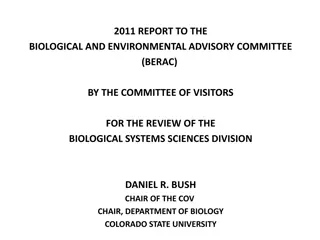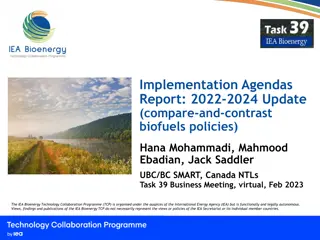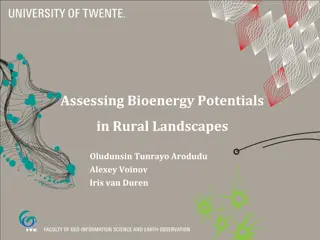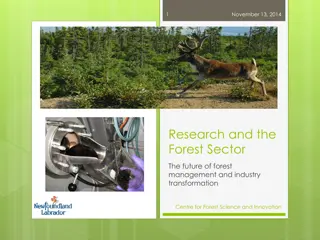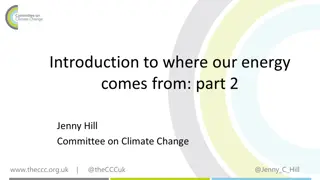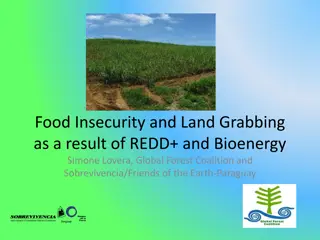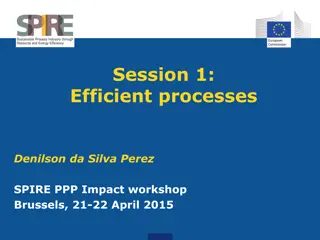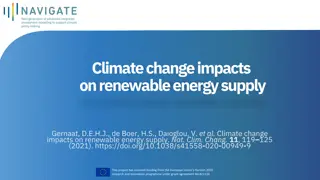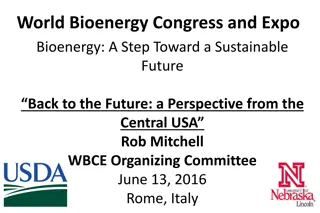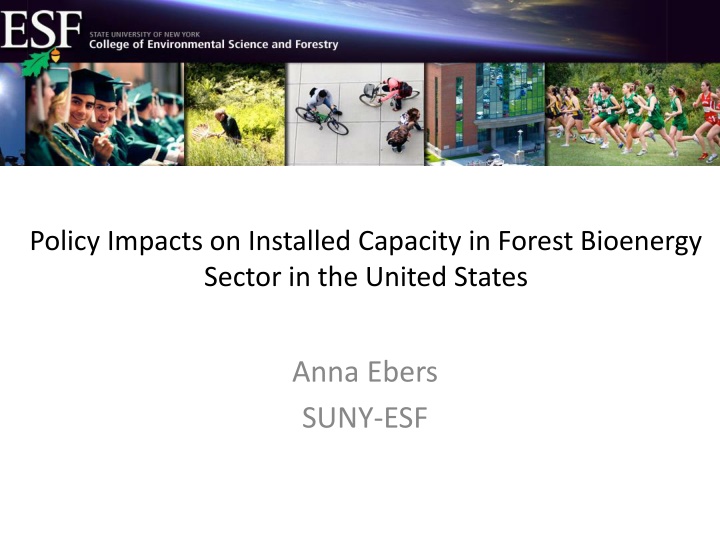
Impacts of Forest Bioenergy Sector Policies in the US
Explore the influence of public policies on installed capacity in the forest bioenergy sector in the United States, highlighting socio-economic and ecological benefits, including home-grown feedstock, energy security, and sustainable practices. The study delves into research questions on policy effects and examines the role of federal and state policies in promoting forest biomass technologies.
Download Presentation

Please find below an Image/Link to download the presentation.
The content on the website is provided AS IS for your information and personal use only. It may not be sold, licensed, or shared on other websites without obtaining consent from the author. If you encounter any issues during the download, it is possible that the publisher has removed the file from their server.
You are allowed to download the files provided on this website for personal or commercial use, subject to the condition that they are used lawfully. All files are the property of their respective owners.
The content on the website is provided AS IS for your information and personal use only. It may not be sold, licensed, or shared on other websites without obtaining consent from the author.
E N D
Presentation Transcript
Policy Impacts on Installed Capacity in Forest Bioenergy Sector in the United States Anna Ebers SUNY-ESF
Benefits of Forest Bioenergy I Socio-economic: Home-grown feedstock & energy security Local economic development & tax base Base-load electricity Increased life-time of landfill Reduces biomass build-up and wildfires Reduced cost of forest treatment
Benefits of Forest Bioenergy II Ecological: Sustainable harvesting practices Remove invasive wood species Decrease insects and disease outbreak Releases biogenic carbon
Research Questions Policy Impacts: Did public policies impact generating capacity in forest bioenergy? If yes, which type of policies resulted in the highest generation?
Overview of the study Focus: electricity & CHP produced from forest biomass New opportunity: market for low-grade woody materials Technology: combustion, CHP, co-firing Larger scale (>1 MW): industrial & commercial sectors Policies: federal and state
Study design Input policies Output policies Capital policies
Data Policy database: - 465 state and federal policies - policy classification by category - year of introduction - applicable sector - sources: data-mining, Becker et al. 2011, DSIRE Generating capacity database: - operating capacity MW - number of plants - announced capacity - years 2003-2013 - sources: EIA, Forisk Consulting
Carrots Net Metering (42) Renewable Energy Credit (37) Production Payment (10) Production Incentive (89) Incentive (243) Property Tax Incentive (25) Sales/Use Tax Exemption (20) Tax Exemption Zone (3) Tax Exemption (48) Tax Credit (36) Tax Deduction (3) Depreciation (1) Tax Incentive (88) Corporate Tax Credit (22) Production Tax Credit (8) Investment Tax Credit (6) Grant (33) Loan (27) Bond (6) Project Finance (66) Loan Program (26) Loan Guarantee (1) State Bond Program (4) Federal Bond Program (2)
Sticks and Sermons Renewable Portfolio Standard (38) Public Benefits Fund (17) Green Power Purchasing (10) Green Power Mandate (9) Siting and Permit Regulation (2) Regulation Consumption/P roduction Standard (76) (118) Connectivity Standard (42) Information Education and Outreach (35) Coordination and Action Plan (27) Reporting/Disclosure (25) Dissemination (87) (104) Research & Feasibility (17) R&D Grant (13) Audit & Feasibility Study Grant (4)
Policy Introduction by Type 60 14 50 13 40 8 12 9 10 30 Regulation 15 Information 7 Incentive 12 20 36 30 23 21 10 15 14 8 0
Policy Focus: 3 levels Forest Bioenergy Logging & sawmill/plywood mill residues, wood pellets, chips, CHP 3 Biomass Energy Agricultural biomass, woody biomass incl cellulosic biomass 2 Renewable Energy Wind, solar, geothermal, hydro, fuel cell 1
Forest Bioenergy Policy Index 2013 Oregon Federal California Colorado Connecticut 15 Vermont Wisconsin 24 21 16 15 15 15 Arkansas Louisiana Oklahoma Mississippi S Dakota Wyoming 3 3 3 2 2 2
State Leaders in Installed Capacity 2013 Federal California Maine Florida Virginia Michigan New York Wisconsin Georgia Washington New Hampshire 2840 418 348 335 272 183 162 143 137 126 121 Data Source for Capacity: Forisk Consulting LLC
Policies and Bioenergy Capacities 2013 3000 400 2500 390 2000 380 Operating Capacity 1500 370 Announced Capacity Number of Policies 1000 360 500 350 0 340 2010 2011 2012 2013 Data Source for Capacity: Forisk Consulting LLC
Estimation of Policy Impacts Capacityit=b1*Policy1it+b2*Controlsit+ it i= region or a state t=year Ebers Policy Index: Policy = arb. weight* policy focus
Conclusions Policy tools classification State and regional differences Further work: Policy interactions? Federal & state local Unintended consequences?
Dependent Variables Bioenergy generation variables (Y) Generating capacity of operating plants (MW) Other variables of interest: Number of projects that did not come online Announced capacity Number of operating plants Number of announced plants Electricity production from woody biomass
Independent Variables Features and attributes of policies (X1) -Jurisdiction (state) -Policy approach (incentive, regulation, information) -Policy type, subtype, and specification -Policy strength (levels 1-3) -Year of adoption
Independent Variables II Other control variables: -Whole-sale electricity prices -Prices of chips & pellets -Long-term interest rates -Income per capita -State business climate index -Regional dummy -Availability of forest feedstock (no fed lands) -Size of pulp and paper industry dummy (FS) -Public attitudes towards environment index
Other factors influencing forest biomass not included in this study Public building standards (LEED) Second generation or advanced biofuel policies Forest biomass harvesting guidelines Changes in legal definition of biomass & bioenergy Utility-led and other private programs Organized interest groups
Significance of Forest Bioenergy for electricity: hydro (8%), wind (3%), woody biomass (1%) useful thermal output of CHP: wood (35%), natural gas (34%), coal (19%) residential heating source
Source: Georgia Forestry Commission http://www.gfc.state.ga.us/utilization/forest-biomass/research/ForestBioenergyinGeorgiappt-Jan2010.pdf
Extra graphs # policies vs states Score vs states Score vs number Bar graphs by policy approach, and strength


